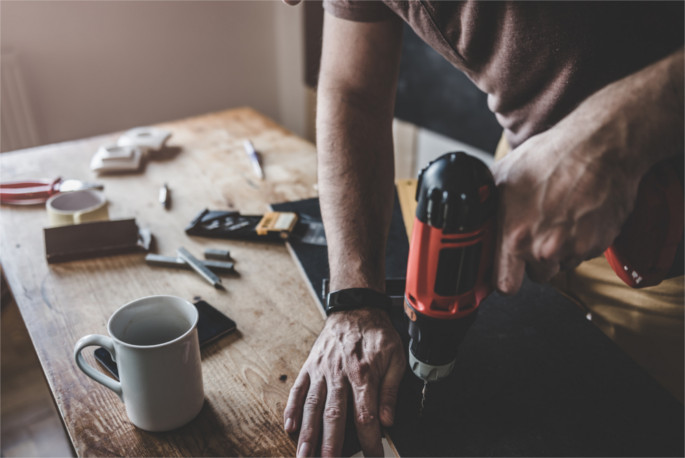Making Your Own Standing Desk Converter

Why Convert Your Desk In To A Standing Desk?
Converting your ordinary desk in to a stand up desk is a big decision. It is a complete change in how you work as well as your working position.There are a few reasons why you may take the leap from a standard desk to a standing desk. For most people, the main reason is that it helps their bodies. If you do suffer from health related issues from sitting then a standing desk may be a great way to solve those issues. Another common reason, is that people simply want to be more active. A standing desk allows you to move around more and instead of sitting, you stay active at work.
Types Of Standing Desk Converter
There are a few different DIY approaches to make your desk in to a standing desk. Here are some of the options:
- Coffee or bedside table – This is the cheapest DIY approach to converting your desk into a standing desk, especially if you already have a spare table lying around. To make this work, all you have to do is fix your smaller table on top of your desk and you are good to go!
- Buy smaller furniture to suit and desk equipment – Furniture stores or warehouses like IKEA sell tables and equipment in abundance. You can easily piece together furniture to convert your desk on the cheap and in quicktime.
- Rid of your old desk and use taller furniture – Most people have a chest of drawers that is at the perfect height to use as a standing desk, so why not just use that. It would save money and time on converting, building or buying a seperate standing desk.
How To Convert Your Desk In To A Standing Desk – A Step By Step Guide
Converting a desk is the quickest and cheapest way to construct your own standing desk. This quick guide explains how to use other tables to convert your desk effectively.
To convert your desk you will need a few pieces of equipment, including:
- Material to construct a frame – Metal, plastic, wood OR a small table
- Drill
- Screws
- Decide on the height of standing desk you need – This is based on your own height
- Construct the frame – using your chosen material, screws and a drill. The frame should be able to balance your desktop. You do not need to do this if you are using a small table instead.
- Once you have your frame or table, you need tog attach it to your desk – Attach your frame/table to your original desk with screws or nails. Make sure to attach all sides of the frame/table for increased stability.
- There you have it, a completed desk conversion. You can now stand and use your desk.
Pros And Cons Of Each DIY Converter
As you can see, there are a few ways to convert your desk to a standing desk. Each of these methods has pros and cons.
Coffee Table/Bedside Table:
Pros
- Cheap and easy DIY solution
- Fairly stable
Cons
- Monitor, keyboard and mouse are all at the same height
- Requires you to have a spare table
- Table has to be the perfect size
Buying Small Furniture And Equipment:
Pros
- Low price
- Easy to move once assembled
- Sturdy
- You have the choice of the features you add and the money you spend
Cons
- May take up a lot of room when not in use
- More expensive than other DIY solutions
Using Taller Furniture:
Pros
- Cheap and easy DIY solution for desk converter
- Stable
Cons
- Requires spare furniture
- Furniture takes up a lot of room

Comments